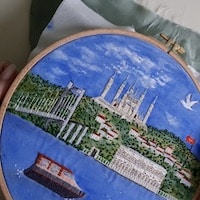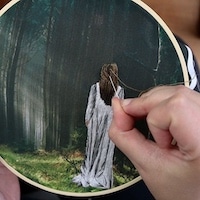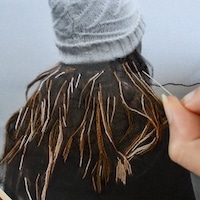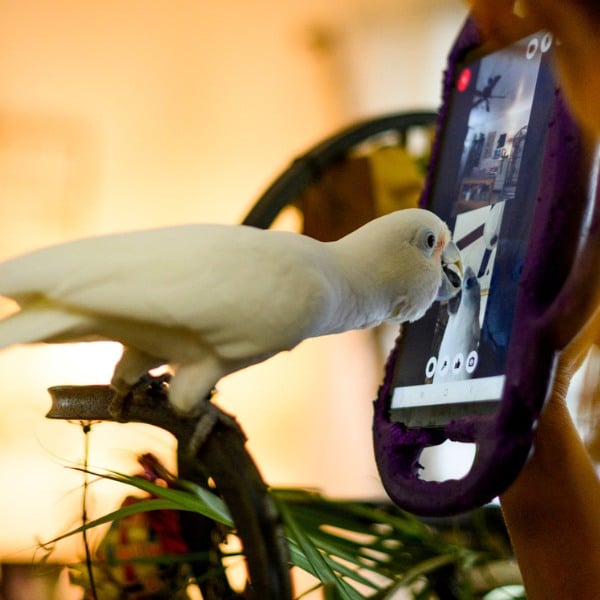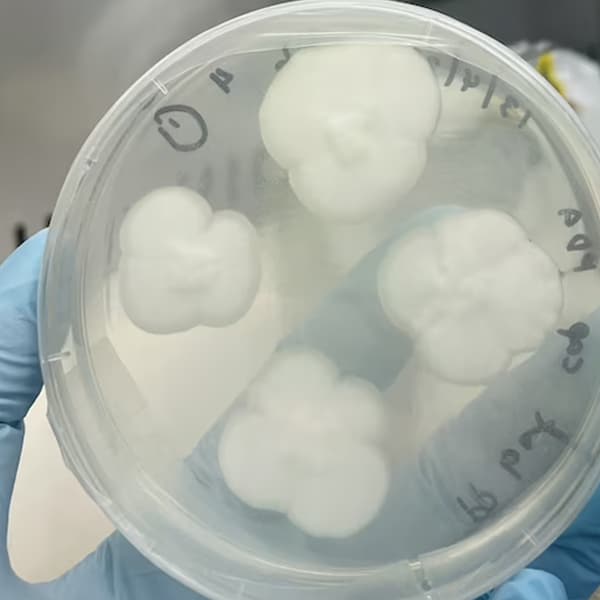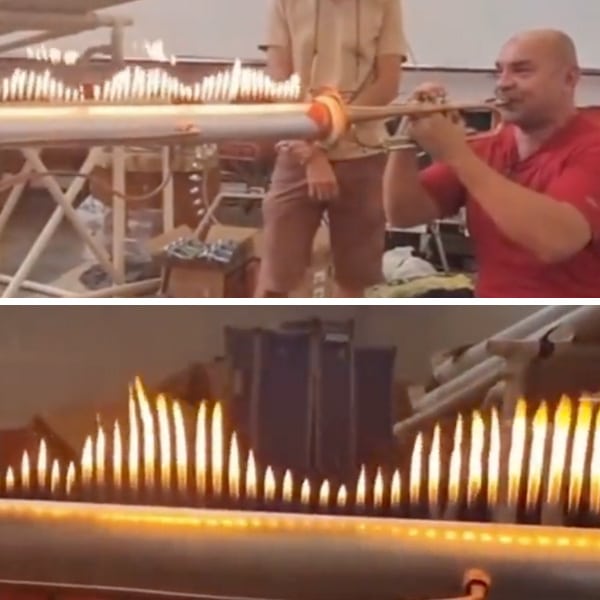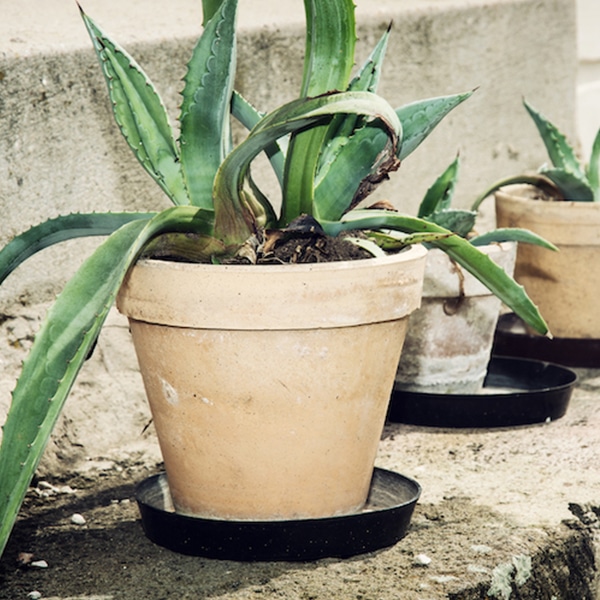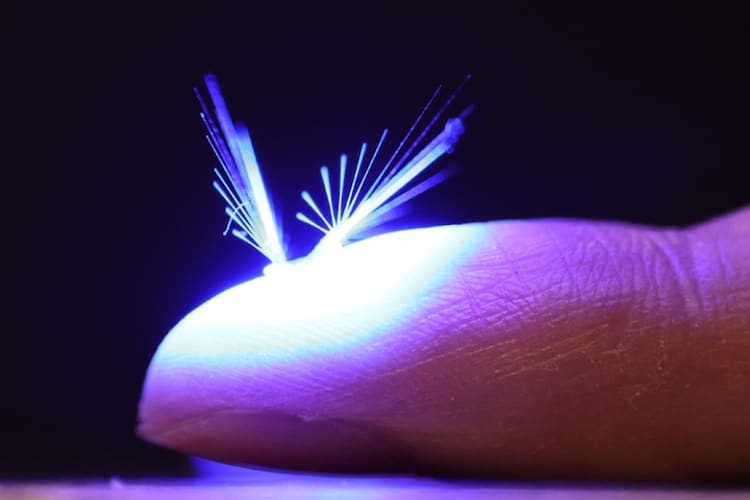
Photo: Jianfeng Yang/Tampere University
The declining populations of pollinators across the globe are of great concern. As the backbone of fertilization and an important foundation of the ecosystem, scientists have come up with incredible solutions to preserve their lives. In Europe, bus stops have become pollinator pit stops. In Japan, tiny water shrines serve as bee respites. But what if pollinator populations are declining too much? A team of scientists from Tampere University in Finland has a possible solution.
The university's Light Robots is a group focused on robots that respond to light and are also lightweight. It honed in on stimuli-responsive polymers. Group leader and Academy Research Fellow Hao Zeng states, “The development of stimuli-responsive polymers has brought about a wealth of material-related opportunities for next-generation small-scale, wirelessly controlled soft-bodied robots.” He goes on to say that these special polymers have been used to make tiny robots walk, swim, and jump, but none have successfully used them to make robots fly—until now.
Zeng and Jianfeng Yang have created a new dandelion-inspired design for their project called FAIRY, or Flying Aero-robots based on Light Responsive Materials Assembly. This polymer-assembly robot can fly by wind and is controlled by light. “Superior to its natural counterparts, this artificial seed is equipped with a soft actuator,” explains Zeng. “The actuator is made of light-responsive liquid crystalline elastomer, which induces opening or closing actions of the bristles upon visible light excitation.” In other words, light can be used to change the shape of the small robot.
Zeng and Yang designed these tiny fairies to mimic one of nature’s best pollinators, the dandelion. The tiny robots have high porosity and are incredibly lightweight, which allows them to easily float in the air. Dandelion seeds create separated vortex rings, which help the seeds balance and travel long distances.
To do their due diligence, the team created a way for the robots to generate their own separated vortex rings. “The fairy can be powered and controlled by a light source, such as a laser beam or LED,” Zeng says. Once light hits the robot, it changes its shape, generates swirling air, and catches the wind to effortlessly take flight. A beam of light can also control how the robot takes off and lands. And because the polymer is responsive to light, during dark and cloudy days, it stays still and waits for optimal light conditions to embark on its journey.
The researchers will next set their sights on improving the design and scaling it to have incredible benefits. They’ll work on the polymer’s sensitivity so that the micro-robots can be controlled in daylight. They’ll also find ways to carry tiny electronic devices like GPS and sensors, and chemical compounds. “It sounds like science fiction,” Zeng writes, “but the proof-of-concept experiments included in our research show that the robot we have developed provides an important step towards realistic applications suitable for artificial pollination.”
The FAIRY project has been running for a little over a year now and has an end date of August 2026. There are many challenges to overcome and questions to answer, but Zeng and his team are confident that the possibilities are endless. “This would have a huge impact on agriculture globally since the loss of pollinators due to global warming has become a serious threat to biodiversity and food production.”
A team of scientists from Tampere University has a possible solution for the declining populations of pollinators: tiny FAIRY robots.
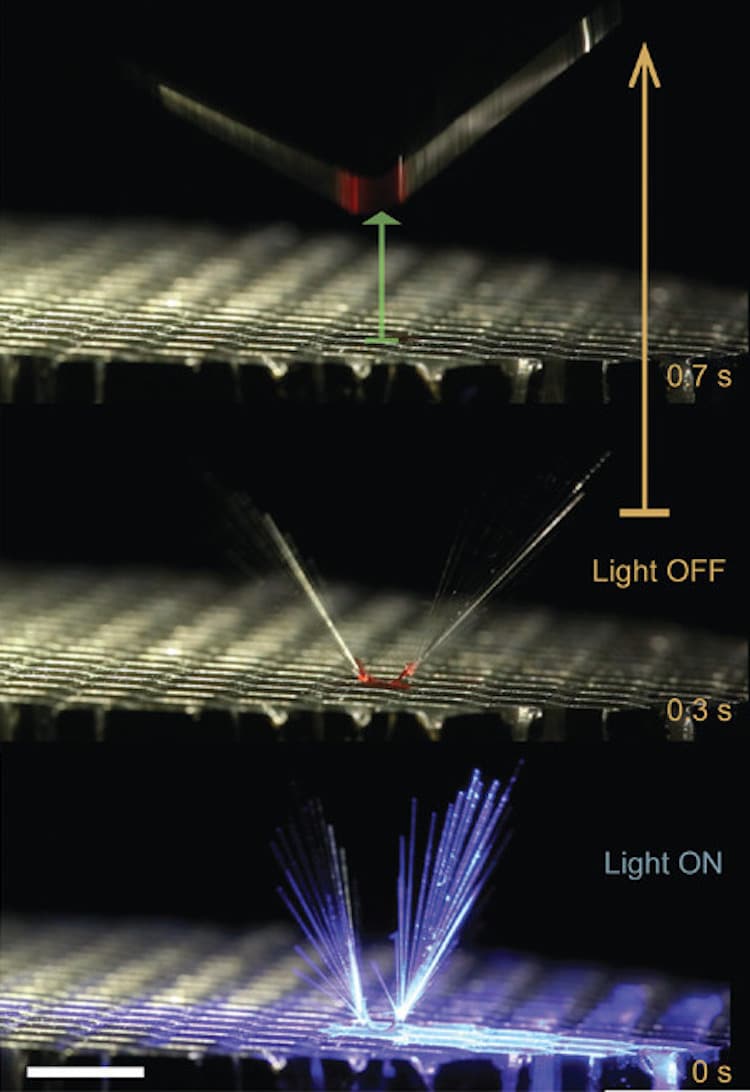
Photo: Hao Zeng and Jianfeng Yang/Tampere University
FAIRY, or Flying Aero-robots based on Light Responsive Materials Assembly, is a polymer-assembly robot that can fly by wind and is controlled by light.

Photo: Hao Zeng and Jianfeng Yang/Tampere University
Hao Zeng and Jianfeng Yang designed these tiny fairies to mimic one of nature’s best pollinators, the dandelion.
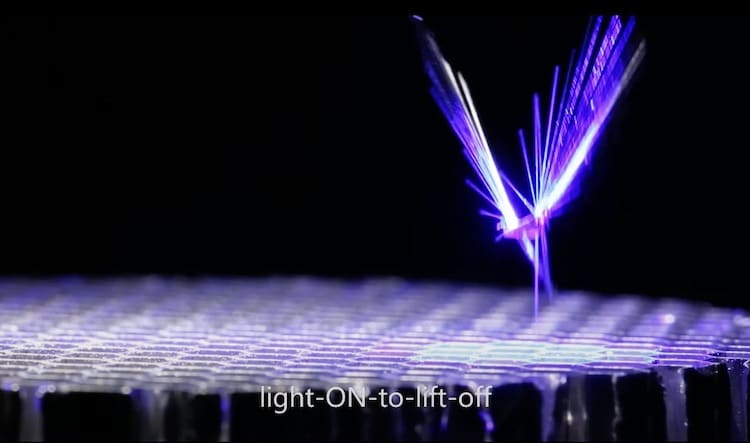
Photo: Hao Zeng and Jianfeng Yang/Tampere University
“It sounds like science fiction,” Zeng starts, “but the proof-of-concept experiments included in our research show that the robot we have developed provides an important step towards realistic applications suitable for artificial pollination.”
h/t: [Good News Network]
Related Articles:
Bus Stops Across Europe Are Getting “Living Roofs” To Help Bees Thrive
Close-Up Portraits of Bees Capture Each of Their Unique Characteristics
Visit ‘Pollinator Park,’ a VR Experience Raising Awareness About Declining Biodiversity
Macro Photos Highlight the Diverse Beauty of Butterfly Pupae



















